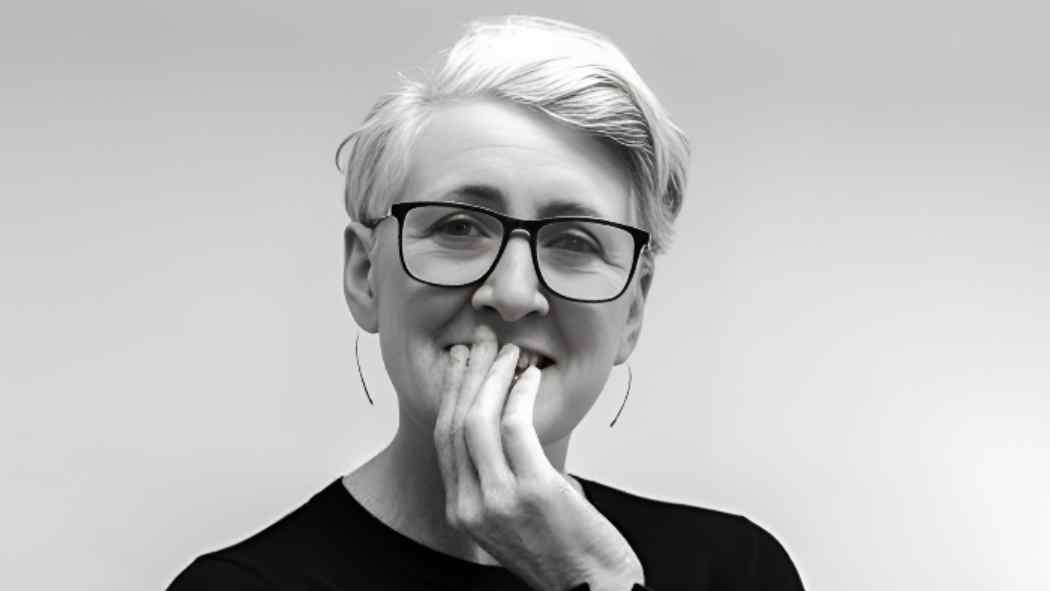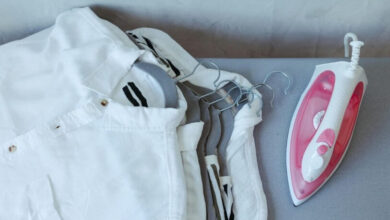Claire Curneen: Sculpting the Fragility and Divinity of the Human Form

The name Claire Curneen stands among the most respected figures in contemporary ceramics. Born in Tralee, County Kerry, Ireland in 1968, and now based in Wales, she is known for her deeply emotive porcelain sculptures that explore the delicate balance between human vulnerability and spiritual transcendence. Her work breathes life into clay, turning it into a vessel for reflection on faith, mortality, love, suffering, and rebirth.
With over three decades of creative exploration, Claire Curneen’s art bridges the sacred and the corporeal, blending mythological and religious symbolism with the raw truth of human existence. This article explores her life, artistic journey, style, and lasting influence in the world of contemporary sculpture and ceramics.
Early Life and Education
Claire Curneen was born in Tralee, a town rich in cultural heritage and Irish Catholic tradition. Growing up surrounded by religious imagery, iconography, and rituals, she developed a fascination with spiritual symbolism that would later shape her artistic expression.
Her formal education began at the Crawford College of Art and Design in Cork, where she earned her diploma in ceramics in 1990. She then pursued postgraduate studies at the University of Ulster in Belfast, followed by a master’s degree in ceramics at the University of Wales Institute in Cardiff in 1992. It was there that her artistic philosophy began to take form, focusing on the expressive potential of the human body as both subject and metaphor.
Artistic Vision and Philosophy
The Human Body as a Vessel
Central to Claire Curneen’s practice is the representation of the human figure. Her sculptures do not aim for anatomical precision but emotional truth. The bodies she creates are elongated, fractured, sometimes incomplete, yet profoundly alive. Each piece embodies themes of fragility, suffering, and redemption. The human body, to her, is a vessel—one that carries memory, pain, and spirit.
She once explained that her inspiration comes from “how we inhabit our bodies and how our physical selves are entwined with emotion and belief.” Her figures, therefore, are less portraits and more reflections—mirrors that invite viewers to see themselves within the cracks and glazes.
Themes of Spirituality and Ritual
Influenced by her Irish Catholic upbringing, Curneen’s work often draws on biblical and mythological imagery. Figures reminiscent of saints, angels, and martyrs populate her sculptures. Yet, rather than presenting idealised icons, she gives them human imperfection—cracked porcelain skin, missing limbs, or darkened surfaces.
This approach transforms traditional religious symbolism into something universal and deeply human. Her work speaks of devotion and doubt, of faith intertwined with suffering, and of beauty found in imperfection.
Materials and Technique
Porcelain as a Symbol of Fragility
Claire Curneen’s primary medium is porcelain—a material she describes as both alluring and treacherous. Its delicacy and translucency allow her to express vulnerability and light, while its tendency to crack under pressure mirrors the fragility of human existence.
She often combines porcelain with terracotta and stoneware, creating visual and emotional contrasts. The white purity of porcelain evokes spirit and transcendence, while the earthen tones of terracotta root the work in mortality and decay. The dialogue between these materials mirrors the eternal tension between body and soul.
The Process of Creation
Curneen’s process is slow, deliberate, and meditative. Each figure is hand-built rather than moulded, ensuring that every imperfection—every fingerprint, crease, or uneven surface—becomes part of the artwork’s narrative. After sculpting, the pieces are fired multiple times, layered with glazes, oxides, and sometimes adorned with gold lustre.
The addition of gold is symbolic. It hints at sanctity, illumination, and divine grace emerging from imperfection. The golden touch turns brokenness into beauty, suggesting that healing and holiness coexist within the same form.
Signature Style and Aesthetic Language
Curneen’s sculptures are immediately recognisable for their ethereal and emotive presence. The figures are usually slender, elongated, and still. They appear to be caught in a moment of pause—neither entirely alive nor lifeless, as if suspended between heaven and earth.
Her colour palette is minimalist. Whites, creams, blacks, and earthy reds dominate her work, occasionally interrupted by bursts of cobalt blue or touches of shimmering gold. The simplicity of colour heightens the spiritual resonance of her forms.
The gestures of her figures are gentle yet powerful—arms raised in prayer, heads bowed in sorrow, bodies curled in introspection. Through minimal motion, she conveys profound emotion, drawing the viewer into a quiet dialogue with the sculpture.
Major Exhibitions and Collections
Claire Curneen has exhibited widely across the United Kingdom and internationally. Her work has been shown in leading galleries and museums, including the Victoria and Albert Museum in London, the National Museum of Wales in Cardiff, and the Walker Art Gallery in Liverpool.
Her notable exhibitions include To This I Put My Name, which explored identity, authorship, and the act of creation; Through Living Roots Awaken, a body of work reflecting on human resilience and spiritual regeneration; and Baroque and Berserk, a large-scale installation set within an eighteenth-century gallery that juxtaposed chaos and grace.
Curneen’s pieces are part of numerous public and private collections around the world, including major institutions in the UK, Europe, and Asia. Her global presence attests to her ability to communicate across cultures through universal human emotion.
Awards and Recognition
Curneen’s contribution to the arts has been acknowledged with several prestigious awards. She received the Creative Wales Award in 2005 and the Creative Wales Ambassador Award in 2012 for her outstanding achievements in ceramics.
She also serves as a senior lecturer at Cardiff Metropolitan University, where she mentors emerging artists and contributes to the academic study of contemporary ceramics. Her dual role as educator and practitioner reflects her dedication to both the making and the meaning of art.
Symbolism and Emotional Resonance
Curneen’s art thrives on duality—strength and fragility, body and soul, beauty and pain. The broken edges, the unglazed patches, and the deliberate imperfections are not flaws but essential truths. They represent the human condition in its most honest form.
Each sculpture tells a silent story of transformation. The clay, once soft and formless, becomes fixed through fire, symbolising how people are shaped by experience and trial. Her work invites viewers to confront their own fragility and find beauty in their scars.
The recurring use of gold is particularly significant. It recalls the Japanese art of kintsugi, where broken pottery is repaired with gold, making the object more beautiful for having been broken. Curneen’s use of gold, though Western in aesthetic, carries a similar philosophy—one of redemption, grace, and the sacredness of imperfection.
Influence and Legacy
Claire Curneen’s influence reaches beyond the realm of ceramics. Her work has inspired a new generation of artists to treat clay not merely as craft material but as a powerful medium for storytelling and emotional expression.
She has helped blur the line between craft and fine art, positioning ceramics firmly within contemporary artistic discourse. Her figures stand alongside bronze and marble sculptures in their ability to convey complexity, emotion, and presence.
Critics and curators frequently describe her work as “poetic,” “spiritual,” and “timeless.” Yet what truly sets her apart is her commitment to authenticity. She does not chase trends or novelty; instead, she delves deeper into timeless human questions—faith, loss, love, and the search for meaning.
Artistic Comparison and Context
Curneen’s work has often been compared to that of Renaissance and Baroque sculptors who explored religious and emotional themes through the human form. However, while artists like Bernini or Donatello sought idealised beauty, Curneen celebrates imperfection. Her figures are humble and introspective rather than grand or dramatic.
In the contemporary landscape, her art stands in conversation with artists who use fragility as strength—Louise Bourgeois, Antony Gormley, and Magdalene Odundo among them. Yet her voice remains distinct. She brings an Irish sense of mysticism and a feminine depth of empathy to the ancient language of clay.
Recent Works and Contemporary Relevance
In recent years, Curneen’s sculptures have reflected a growing awareness of the emotional climate of our times. Works created during the pandemic, for example, speak of solitude, endurance, and spiritual renewal. Her figures—calm, contemplative, and quietly radiant—capture the shared human longing for connection and healing.
Her recent series shows figures intertwined with roots, branches, or shards, symbolising growth and rebirth emerging from chaos. These motifs resonate deeply with audiences who have experienced isolation and transformation.
Conclusion
The legacy of Claire Curneen lies in her ability to capture the intangible essence of humanity through the tangible medium of clay. Her sculptures transcend their material boundaries, inviting the viewer to reflect on the fragility of life, the endurance of faith, and the beauty of imperfection.
In her work, clay becomes flesh, gold becomes grace, and silence becomes a language of truth. Each piece stands as a meditation on existence—at once ancient and modern, personal and universal.



